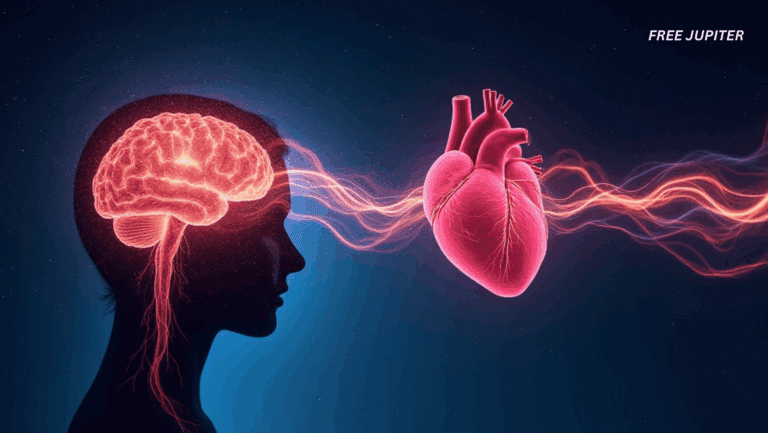Intermittent fasting has become one of the most talked-about health trends in recent years. While it might seem like just another diet fad, the science behind fasting is more complex and compelling than many realize. From weight management to cellular repair, fasting initiates a range of biological processes that can benefit the body in multiple ways. But what exactly happens when you go without food for an extended period, like 36 hours? Researchers have simulated this fasting window to uncover the changes that occur in your body at every stage. The results are not only fascinating but may offer insight into how strategic fasting could support long-term health when done correctly.
The Basics of Intermittent Fasting
Intermittent fasting involves cycling between periods of eating and not eating. Unlike traditional diets that focus on what you eat, fasting focuses on when you eat. There are many styles of intermittent fasting, such as the 16:8 method, where you fast for 16 hours and eat within an 8-hour window. A 36-hour fast, however, takes this concept further, pushing the body into deeper metabolic states that do not usually occur during shorter fasts.
This extended fast taps into energy reserves, activates repair mechanisms, and alters hormone levels. These changes do not just help with fat loss. They also affect how your cells function, how inflammation is regulated, and how the body deals with stress.
Hour 0 to 4: The Digestive Phase
The fasting journey begins right after your last meal. In the first four hours, your body is still digesting and absorbing nutrients from the food you consumed. Blood glucose levels are relatively high, and insulin is active, helping to transport glucose into cells for immediate energy or storage. During this time, your body is still in what scientists call the “fed state,” where energy comes primarily from carbohydrates.

Hours 4 to 8: Switching to Glycogen
As digestion wraps up, your insulin levels begin to fall. Your body starts to transition from using glucose from food to tapping into stored glycogen, which is the storage form of glucose in the liver and muscles. Glycogen provides quick energy and can sustain basic functions for several hours. By the end of this phase, your body is entering the early fasting state, where hunger hormones like ghrelin begin to rise, and mental focus may increase slightly.
Hours 8 to 12: The Real Fast Begins
This stage marks the beginning of the post-absorptive phase. Glycogen stores are depleting, and the body starts preparing for the next energy source: fat. Insulin levels drop even further, allowing fat cells to release stored triglycerides. These are broken down into fatty acids, which the liver converts into ketones. Ketones serve as a backup fuel source, especially for the brain, which cannot directly use fat for energy.
You may start feeling a bit more alert as ketone levels rise. This is likely an evolutionary response to promote focus during times of food scarcity, helping humans stay sharp while hunting or foraging.
Read More: The 5 Best Fruits For Liver Detoxification
Hours 12 to 16: Ketosis Begins
By now, your body has moved into mild ketosis. The metabolic switch from glucose to fat burning is well underway. The liver continues producing ketones to fuel the brain and other organs. Fat becomes the primary energy source, and your body starts breaking down its own fat stores more efficiently. You may notice a decrease in appetite during this stage, which is another benefit of rising ketone levels.
Research has shown that intermittent fasting at this point may enhance insulin sensitivity and reduce systemic inflammation, though these benefits vary depending on the individual and frequency of fasting.
Hours 16 to 24: Autophagy and Repair
Autophagy is a cellular clean-up process that begins around 16 hours into a fast. This self-repair mechanism breaks down old, damaged, or malfunctioning cells and recycles their parts for energy or to build new cells. This is considered one of the most important health benefits of fasting, as it may reduce the risk of chronic diseases like cancer, Alzheimer’s, and Parkinson’s.
In this window, your body is not just conserving energy. It is becoming more efficient. Growth hormone levels may begin to increase, helping to protect muscle tissue and support fat metabolism. You may start feeling less hungry and more mentally clear.
Hours 24 to 30: Deep Ketosis and Hormonal Shifts
By the time you reach the 24-hour mark, your body is in full-blown ketosis. Your ketone levels are high enough to provide steady energy for the brain and muscles. Inflammatory markers continue to decline, and the repair processes like autophagy intensify.
Growth hormone levels can spike significantly, sometimes by over 1000 percent, according to some studies. This hormone helps preserve lean muscle, promotes fat burning, and may support skin and bone health. Your insulin sensitivity improves, which can help regulate blood sugar more effectively over the long term.
Hours 30 to 36: Maximum Autophagy and Metabolic Reset
In the final stretch of the 36-hour fast, autophagy is at its peak. Your body is now optimizing every process to survive without food. It is breaking down worn-out cells, reducing oxidative stress, and rejuvenating tissue at the cellular level.
Metabolism does not shut down during this time. Contrary to old myths, the body does not go into “starvation mode” in a single day. In fact, metabolic rate may temporarily increase slightly due to elevated norepinephrine and growth hormone levels.
Mentally, many people report a sense of euphoria or clarity. Physically, you might feel a mix of fatigue and calmness. Your body has entered a fully adaptive state, one designed to protect you during extended periods of food scarcity.
Health Benefits of Fasting, Backed by Research
Many of the processes described above have been observed in clinical studies or animal models. While more human trials are needed, early research supports a number of potential benefits from intermittent fasting, including:
- Improved insulin sensitivity
- Lower inflammation markers
- Cellular repair through autophagy
- Increased longevity in some species
- Improved cardiovascular markers like blood pressure and cholesterol
- Enhanced brain function due to ketone use and growth factors
Some studies have even suggested that intermittent fasting could reduce the risk of metabolic disorders, although more long-term data is needed to confirm these effects.
Read More: The Exact Amount of Fiber You Need Daily to Protect Against Chronic Disease
Fasting Cautions and Considerations
Fasting for 36 hours is not for everyone. While the potential benefits are intriguing, the risks must be taken seriously. People with diabetes, eating disorders, or chronic illnesses should not attempt extended fasting without medical supervision. Pregnant or breastfeeding women should avoid it entirely. Dehydration, nutrient deficiency, and fatigue are also potential concerns if fasting is not done carefully.
Staying hydrated, getting enough electrolytes, and easing back into eating with gentle, nutrient-rich foods are important steps to ensure the process does not cause more harm than good.
Fasting for 36 hours is not just about skipping meals
It triggers a carefully choreographed biological response that involves hormonal changes, metabolic shifts, and even cellular recycling. While it is not a magic bullet, this method of intermittent fasting can be a powerful tool for those looking to improve metabolic health, reduce inflammation, and possibly extend lifespan.
As always, any fasting routine should be approached with education, intention, and, if possible, guidance from a healthcare provider. The science is still evolving, but one thing is clear: our bodies are far more adaptable than we give them credit for. In the right context, a brief period of fasting can help the body reset, repair, and refocus.










